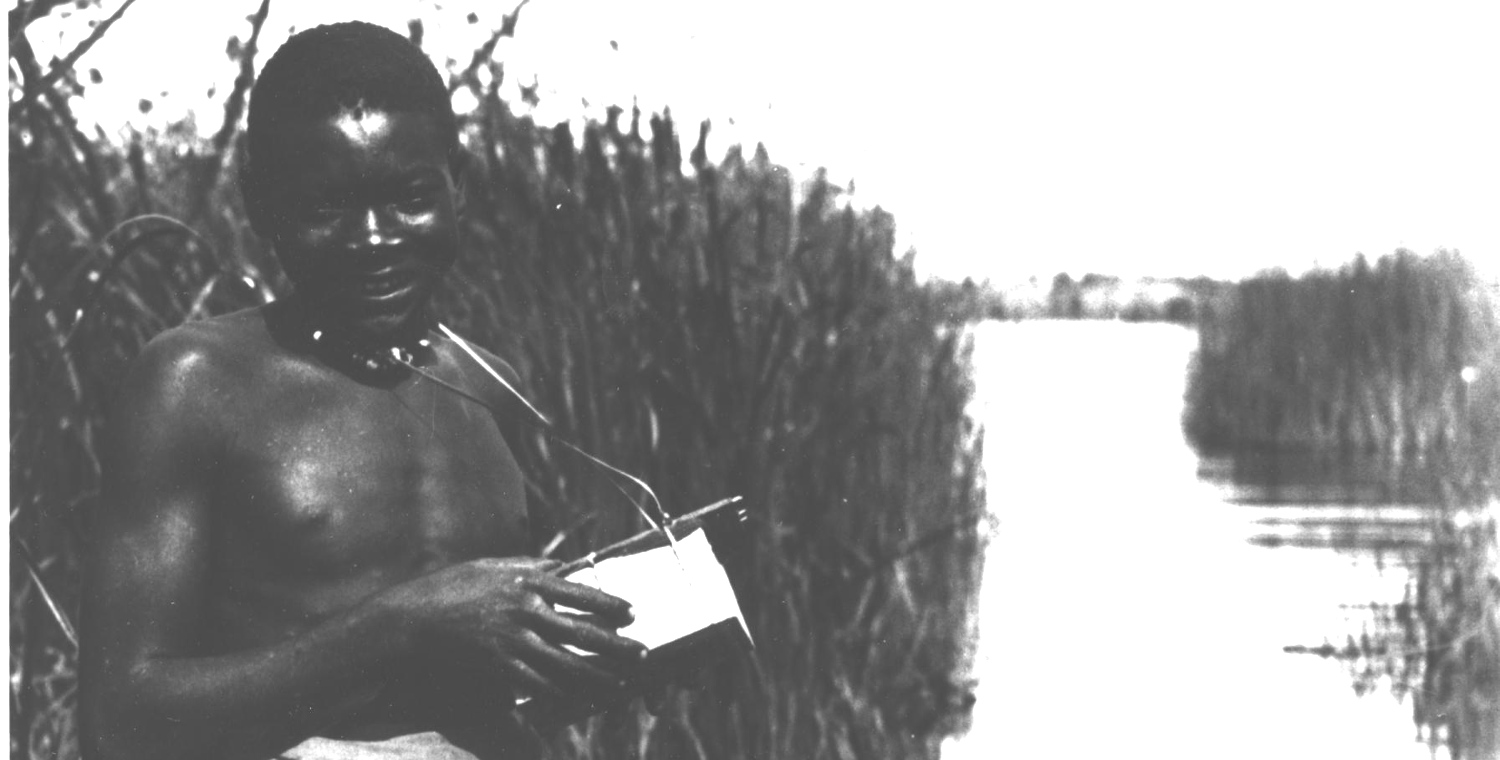In the nineteenth century Reading’s famous biscuit company Huntley & Palmers exploited Britain’s empire to expand the markets for their products. As early as 1840 their Banbury cakes were sent to the USA, India and Australia. In 1874 they boasted, ‘seldom a ship sails from England that does not bear within his ribs a Reading biscuit’. By 1900 it had become the world's largest biscuit manufacturer, and was increasingly famous for its innovative and decorative biscuit tins, made by its sister company Huntley, Boorne & Stevens.
In his 1899 story The Heart of Darkness, Joseph Conrad even used an image of empty Huntley & Palmers tin as a symbol of European colonial power and destruction in Africa:
‘It was a great comfort to turn... to my influential friend, the battered, twisted, ruined, tin-pot steamboat. I clambered on board. She ran under my feet like an empty Huntley and Palmer (sic) biscuit tin...’
The image above shows a Belgian trading steamer on the Congo, complete with a Huntley & Palmers biscuit tin beside its funnel, similar to the one described by Conrad.
The Heart of Darkness is a sceptical narrative about European colonialism and the western encounter with colonised people. Its narrator Marlow is on a journey into the ‘heart of darkness’ along the Congo River in the Congo Free State, which was ruled by Belgian King Leopold II, one of Huntley & Palmers royal customers. Leopold II was the autocratic ruler of the Congo Free State from 1885 to 1908, a period characterised by atrocities and systematic brutality, including forced labour, torture, murder, and kidnapping.
Marlow makes the biscuit tin allusion on the second stage of his journey into the jungle. The biscuit tin, like the narrator, is out of place here. The tin is empty, a shell without a kernel. It is argued that Conrad is criticising the superficial civilisation of the west and its failed attempts to tame and ‘civilise’ Africa, hence the tin is decorative but useless in its present environment; hollow, ‘battered’ and ‘ruined’. Furthermore Conrad describes the motivation of the Europeans:
'To tear treasure out of the bowels of the land was their desire, with no more moral purpose at the back of it than there is in burglars breaking into a safe'.
Beyond such metaphorical imagery Huntley & Palmers' biscuit tins were often reused in many practical ways and were sometimes as highly prized as their contents. The image at the end of this blog is from the Museum’s Huntley & Palmers Collection and was taken by Major Powell-Cotton (1866-1940) on his expedition to Congo between 1904 and 1907. It shows a young man holding a thumb piano made using a recycled Huntley & Palmers biscuit tin as its sounding box. There are several examples in the Reading Museum collection displayed in the Huntley and Palmers Gallery.
When the English Prince Henry died in Sierra Leone in 1896 it was said that he was brought home in a rum-filled tank made out of biscuit tins. Another example of African re-use is also displayed in this Gallery, a sword and scabbard that were found on the battlefield of Omdurmam in the Sudan in 1898. The scabbard has metal bands cut from the bases of Huntley & Palmers biscuits tins; so that the firm's name was prominently displayed. The battle was part of a British military campaign led by General Herbert Kitchener against Dervish rule in the Sudan because they threatened British strategic interests in the region. The battle took place on 2 September 1898 and the Khalifa Abdullah el Taash was decisively defeated. Winston Churchill rode with the 21st Lancers at the battle.
References
T. A. B. Corley (1972) Huntley & Palmers of Reading 1822-1972: Quaker Enterprise in Biscuits (London: Hutchinson)
Joseph Conrad (1899) The Heart of Darkness

A man holding a thumb piano made using a recycled Huntley & Palmers biscuit tin, taken by Major Powell-Cotton (1866-1940) on his expedition to Congo between 1904 and 1907





